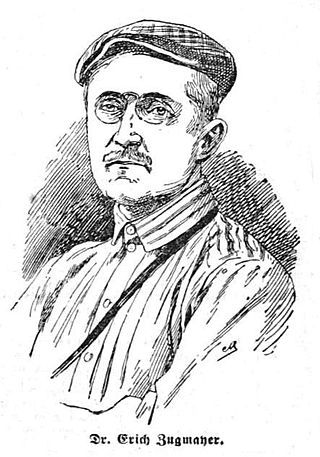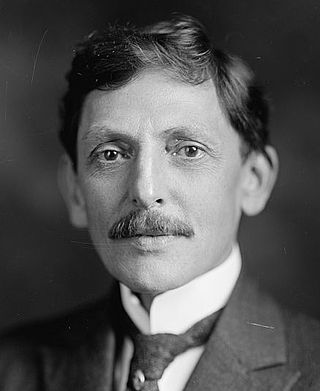
Charles Barney Cory was an American ornithologist and golfer.

Robert Ridgway was an American ornithologist specializing in systematics. He was appointed in 1880 by Spencer Fullerton Baird, secretary of the Smithsonian Institution, to be the first full-time curator of birds at the United States National Museum, a title he held until his death. In 1883, he helped found the American Ornithologists' Union, where he served as officer and journal editor. Ridgway was an outstanding descriptive taxonomist, capping his life work with The Birds of North and Middle America. In his lifetime, he was unmatched in the number of North American bird species that he described for science. As technical illustrator, Ridgway used his own paintings and outline drawings to complement his writing. He also published two books that systematized color names for describing birds, A Nomenclature of Colors for Naturalists (1886) and Color Standards and Color Nomenclature (1912). Ornithologists all over the world continue to cite Ridgway's color studies and books.

Erwin Friedrich Theodor Stresemann was a German naturalist and ornithologist. Stresemann was an ornithologist of extensive breadth who compiled one of the first and most comprehensive accounts of avian biology of its time as part of the Handbuch der Zoologie. In the process of his studies on birds, he also produced one of the most extensive historical accounts on the development of the science of ornithology. He influenced numerous ornithologists around him and oversaw the development of ornithology in Germany as editor of the Journal für Ornithologie. He also took an interest in poetry, philosophy and linguistics. He published a monograph on the Paulohi language based on studies made during his ornithological expedition to the Indonesian island.

Austin Roberts was a South African zoologist. He is best known for his Birds of South Africa, first published in 1940. He also studied the mammalian fauna of the region: his work The mammals of South Africa was published posthumously in 1951. The 7th edition of Roberts' Birds of Southern Africa which appeared in 2005, is the standard work on the region's birds.

Nicholas Aylward Vigors was an Irish zoologist and politician. He popularized the classification of birds on the basis of the quinarian system.

Leonhard Hess Stejneger was a Norwegian-born American ornithologist, herpetologist and zoologist. Stejneger specialized in vertebrate natural history studies. He gained his greatest reputation with reptiles and amphibians.

Wilfred Hudson Osgood was an American zoologist.

Carl Eduard Hellmayr was an Austrian ornithologist.
Karl Patterson Schmidt was an American herpetologist.

James John Joicey FES was an English amateur entomologist, who assembled an extensive collection of Lepidoptera in his private research museum, called the Hill Museum, in Witley, Surrey. His collection, 40 years in the making, was considered to have been the second largest in the world held privately and to have numbered over 1.5 million specimens. Joicey was a fellow of the Zoological Society of London, the Royal Geographical Society, the Royal Entomological Society, the Royal Horticultural Society, and the Linnean Society of London.
Arthur Loveridge was a British biologist and herpetologist who wrote about animals in East Africa, particularly Tanzania, and New Guinea. He gave scientific names to several gecko species in the region.

Erich Johann Georg Zugmayer was an Austrian zoologist and ichthyologist who worked in the Austrian foreign ministry. He collected extensively in Asia where he went on several expeditions including Western Tibet (1906) and Baluchistan (1911). He described several new species of fishes and several bird taxa were described from his collections.

Paul Bartsch was an American malacologist and carcinologist. He was named the last of those belonging to the "Descriptive Age of Malacology".
Louis Beethoven Prout (1864–1943) was an English entomologist and musicologist.
The Captain Marshall Field Expeditions were undertaken by the Field Museum of Natural History in Chicago, Illinois. The two Captain Marshall Field paleontological expeditions had the goal of finding South American Cenozoic mammals. The mammals of South America had evolved in near total isolation from the rest of the world from almost the beginning of the Cenozoic Era until only a few million years ago.
Bryan Patterson was an American paleontologist at the Field Museum of Natural History in Chicago.

Ludwig Heinrich Philipp Döderlein was a German zoologist. He specialized in echinoderms, particularly sea stars, sea urchins, and crinoids. He was one of the first European zoologists to have the opportunity to do research work in Japan from 1879 to 1881. Today, he is considered one of the most important pioneers of marine biological research in Japan.

Louis Compton Miall FRS was an English palaeontologist and biologist who was Professor of Biology at the University of Leeds.
Franz Xaver Alfred Johann Schilder was an Austrian-born German biologist, taxonomist, malacologist and honorary professor of animal geography.

Thomas Edward Penard was an American engineer and ornithologist who, along with his brothers studied the birds of Surinam. Along with his brothers, he also took and interest in folklore and linguistics in the Caribbean.















